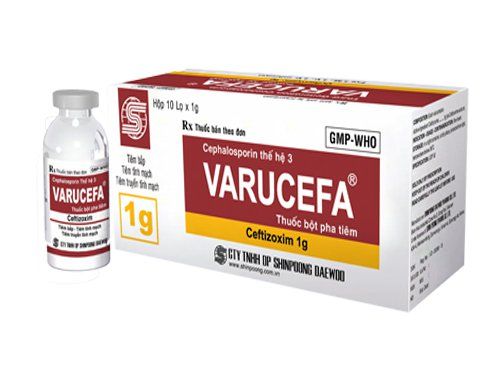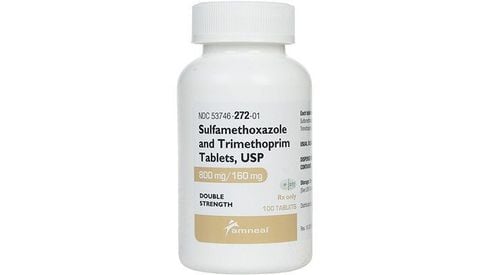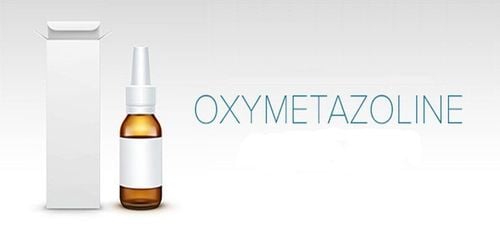This is an automatically translated article.
Ceftibiotic 2000 is prepared in the form of a powder for injection, containing the main active ingredient is Ceftizoxime with a concentration of 2000mg and a number of other excipients with sufficient concentration. Let's learn about the uses and other information about Ceftibiotic 2000 through the article below.
1. What is Ceftibiotic 2000?
Ceftibiotic 2000 is prepared as a powder for injection, containing the main active ingredient is Ceftizoxime, an antibiotic belonging to the 3rd generation Cephalosporin group with bactericidal effect. Ceftizoxime inhibits the synthesis of mucopeptides in the bacterial cell wall in the same way as other cephalosporin antibiotics.
2. In which cases is Ceftibiotic indicated?
Ceftibiotic is indicated in the following cases:
Infections caused by susceptible bacteria. Genital infections, urinary tract infections. Lower respiratory tract infections. Gynecological infections include endometritis, pelvic infection, and pelvic inflammatory disease. Bone and joint infections. Skin infections. Sepsis, meningitis, endocarditis.
3. Dosage instructions - how to use Ceftibiotic 2000
3.1. How to use Intravenous infusion : Mix Ceftibiotic with 50ml to 100ml of sodium chloride or other intravenous solution. Deep intramuscular injection: Inject deep into muscle, avoid injecting into blood vessels. The amount of drug is divided into small pieces, injected into different muscle areas when injecting doses greater than 2g. Slow intravenous injection: Inject slowly from 3-5 minutes, injected directly or through the infusion tube. 3.2. Dosage Adults
Dose 1-2g/time, 8-12 hours/time. In case of severe infection, 2-4 g IV every 8 hours can be given intravenously, the maximum dose should not exceed 2g/4 hours/time. Renal impairment requires dose adjustment to suit creatinine clearance. Uncomplicated gonorrhea: Single intramuscular injection of 1g. Uncomplicated urinary tract infections: 500 mg intravenously or intramuscularly every 12 hours. Children
Mild to moderate infections: 150mg/kg/day, divided into 3 doses. Severe infections: 150-200 mg/kg/day, divided into 3-4 doses. Because this is a drug that is prepared in the form of a powder for injection used for infusion, the injection is done under the supervision of medical staff. Patients should not self-administer at home, if you do not fully understand the infusion procedure and how to dispose of needles, syringes, as well as other items used to inject drugs.
4. What should be avoided when injecting Ceftibiotic?
Diarrhea may occur with antibiotic use, which could be a sign of a new infection. Call your doctor if you have watery or bloody diarrhea. Do not use any medicine to prevent diarrhea unless directed by your doctor.
5. What side effects does Ceftibiotic cause?
Contact the nearest medical center if you develop any of the following symptoms of an allergic reaction: difficulty breathing, hives, swelling of your lips, face, tongue or throat. Serious allergic reactions: watery or bloody diarrhea, severe pain, burning, irritation or skin changes where the needle was inserted, skin rash, bruising, severe tingling, numbness, pain, muscle weakness, irregular heartbeat, fever, chills, body aches, flu symptoms, easy bruising or bleeding, unusual weakness, fever, sore throat and headache with a red, blistering skin rash severe blistering, convulsions (faeces or convulsions), or jaundice (yellowing of the eyes or skin). Less serious side effects are more likely: pain, irritation, or stiffness at the injection site, stomach pain, nausea, vomiting, numbness or tingling, headache, or itching or vaginal discharge . These are some of the possible side effects, but if you experience any other effects contact your doctor to get it corrected.
6. Notes before using Ceftibiotic
During the use of Ceftibiotic, patients need to pay attention to the following issues:
Absolutely do not use Ceftibiotic if you are allergic to ceftizoxime or to other cephalosporin antibiotics, such as: cefaclor, cefadroxil , cefdinir, cefixim, cefprozil, ceftazidime, cefotaxime, cefuroxime, cephalexin,... Tell your doctor if you are allergic to any medications (especially penicillins) or have a history of: kidney disease , liver disease, a stomach or intestinal disorder such as colitis, or if you are malnourished. If these are the cases, it is recommended to replace Ceftibiotic with another antibiotic or dosage adjustment may be required. The medicine is unlikely to harm an unborn baby. If you are pregnant or planning to become pregnant, inform your doctor about the benefits and risks. Active ingredient Ceftizoxime may pass into breast milk and may harm your baby. suck. In case of breastfeeding do not use Ceftibiotic drug.
7. What drugs affect Ceftibiotic 2000?
Before using Ceftibiotic, tell your doctor if you are using any of the following medicines: antibiotics such as Amikacin, Gentamicin, Kanamycin, Neomycin, Streptomycin or Tobramycin. If you are taking any of the medicines listed above, you may not be able to take Ceftibiotic, or your dosage may need to be adjusted. In addition to the drugs mentioned above, there may be other drugs that affect the effects of Ceftibiotics. Therefore, inform your doctor about medicines, herbal products, herbal medicines, and dietary supplements. Do not start a new medication without telling your treating doctor. Ceftibiotic 2000 is prepared as a powder for injection, containing the main active ingredient is Ceftizoxime with a concentration of 2000mg. The drug is used to treat a number of bacterial infections. To ensure the effectiveness of treatment and avoid side effects, patients need to take medicine according to prescription or consult a doctor, professional pharmacist.
Follow Vinmec International General Hospital website to get more health, nutrition and beauty information to protect the health of yourself and your loved ones in your family.
Please dial HOTLINE for more information or register for an appointment HERE. Download MyVinmec app to make appointments faster and to manage your bookings easily.













